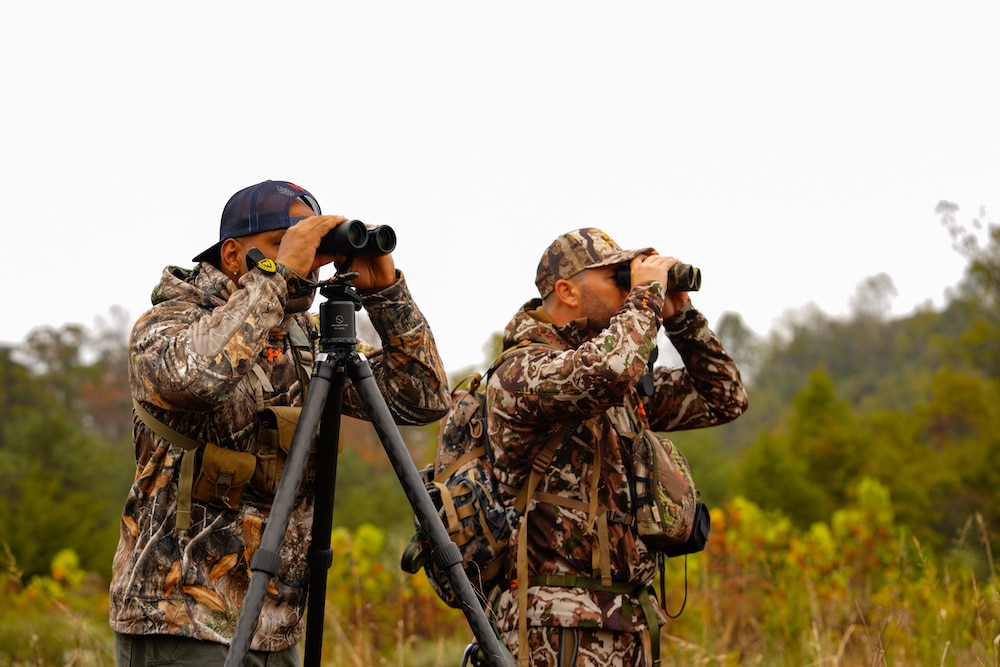The simple snap of a branch is a sound that can get any bowhunter’s heart racing. This subtle noise can be the cue that the big buck you’ve been waiting for all season is walking in. Even if the sound is from a squirrel more often than not, you’re at least listening, and you’d be ready if it was indeed a deer. Listening to wildlife sounds and learning animal behavior will make you a better bowhunter. Archery practice allows you to make the shot, but learning about nature puts you in a position to get one. Here are some steps to improve your skills.
The more time you spend watching wildlife, the more opportunities you have to study animal behaviors. Learning about the habits of different animals and understanding what they mean can help you predict their patterns.
When I first started bowhunting elk many years ago, I had very limited experience being within 100 yards of them. On an early September morning, I was climbing a ridge in the pitch black. Elk would feed in the farm fields below and move into the trees just before daylight. I was moving as silently as I could through the woods, trying to get into a position to cut them off as they moved up the hill. In the darkness, while I had heard bugles down below, I didn’t have any reason to believe elk had already made it to where I was.
Suddenly, my nose caught the unmistakable odor of elk. I froze, knowing they must be nearby. A few seconds later I heard a bark. For a second, I thought maybe it was a dog’s bark from the ranch house down below. But it sounded too close. Another bark. I froze, listening to the mysterious bark every few minutes. As the light began to peek through the trees, I saw the outline of a cow elk. It was then that I realized the bark was a warning signal, alerting the herd there was danger in the area.
I would like to say that’s the only time I’ve gotten caught, but I’ve been barked at a few times since. However, now I know that I’ve put the elk on edge and can plan my approach accordingly. I’ve also learned that if I wind up in elk in the dark and don’t hear a bark, I haven’t given away my position so long as I stay still and they don’t catch my scent.
This kind of animal behavior is best learned through time in the woods. If you’re lucky enough to be out with a more experienced bowhunter, ask questions about any unusual behavior that you see. Understanding behavior will help you plan accordingly. For example, when a deer casually wags its tail, it’s signaling that everything is fine, and you know the deer isn’t on edge. However, if it suddenly stomps its foot and snorts, it’s signaling that it’s nervous, and a wrong move on your part could send it fleeing.
Too many bowhunters focus on learning everything there is to know about their target species, but forget that those animals exist in an ecosystem. Expanding your skill set to understand everything that’s going on in the habitat makes you into a well-rounded bowhunter.
Your target species will take cues from everything that’s going on around it. Similar to elk, squirrels also bark to signal danger. While squirrels can be annoying and give away your movements with this bark, you can also use it to your advantage. A bark could signal that something is moving into your area that you can’t see. On the other hand, if all squirrel activity such as vocalizations and movement suddenly ceases, it could be an indication of another animal approaching.
Birds are often plentiful in hunting areas, and they make excellent lookouts. Crows, chickadees, sparrows and blue jays are great indicators of deer movement, and many have distinct songs when large animals like deer are in the area. Blue jays are among the most easily identifiable vocal bird, and you can listen to learn what they sound like on the blue jay page of the National Audubon Society.

Pay attention to sights and sounds as you scout this summer. Photo Credit: Bowhunters United
There’s never a slow day in the field if you consider every outing an opportunity to learn. The more time you spend outside, the more knowledge you’ll acquire as long as you pay attention. Skip reading a book or listening to a podcast in the treestand or ground blind, and instead take the opportunity to watch and listen to everything going on around you.
Improve your skills by challenging your mind. Do you know what kind of vegetation is in the area? Use your phone or bring along a pocket bird guide and identify the birds you see. Listen to their various calls and notice what’s going on when they make them. Watching deer in the offseason and learning to predict their next movements based on body language will only help you when bow season arrives.
Every skill you learn builds a stronger foundation as a bowhunter. The sights and sounds of the field tell a story. By immersing yourself in the experience you can begin to read what’s going on. Eventually, this knowledge will help you write a successful end to a hunting trip.